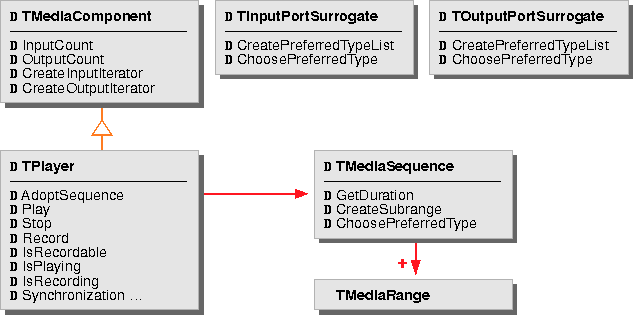
A series of connected media components is called a media network. You construct media networks to route media data when you are playing, recording, modifying, or synchronizing the data. (See "Routing time-media data" on page 298.)
The following classes provide a common interaction framework for all time media.

TMediaComponent is the abstract base class from which all types of media components are derived. You can construct networks of media components by connecting instances of classes derived from TMediaComponent.
TPlayer, a special type of media component, is the abstract base class from which all types of media players are derived. You use media players to play, record, and synchronize media data.
TInputPort Surrogate and TOutputPortSurrogate are the abstract base classes from which all types of media port surrogates are derived. You use port surrogates to access media components' ports, which route media data.
TMediaSequence is the abstract base class from which all types of media sequences are derived. Media sequences are the media data streams played by media players.
TMediaRange represents a subrange within a media sequence.
TTimeMediaException is a concrete error class, derived from TStandardException, that specifies the errors generated by the time-media base classes.
[Contents]
[Previous]
[Next]
![]() Click the icon to mail questions or corrections about this material to Taligent personnel.
Click the icon to mail questions or corrections about this material to Taligent personnel.